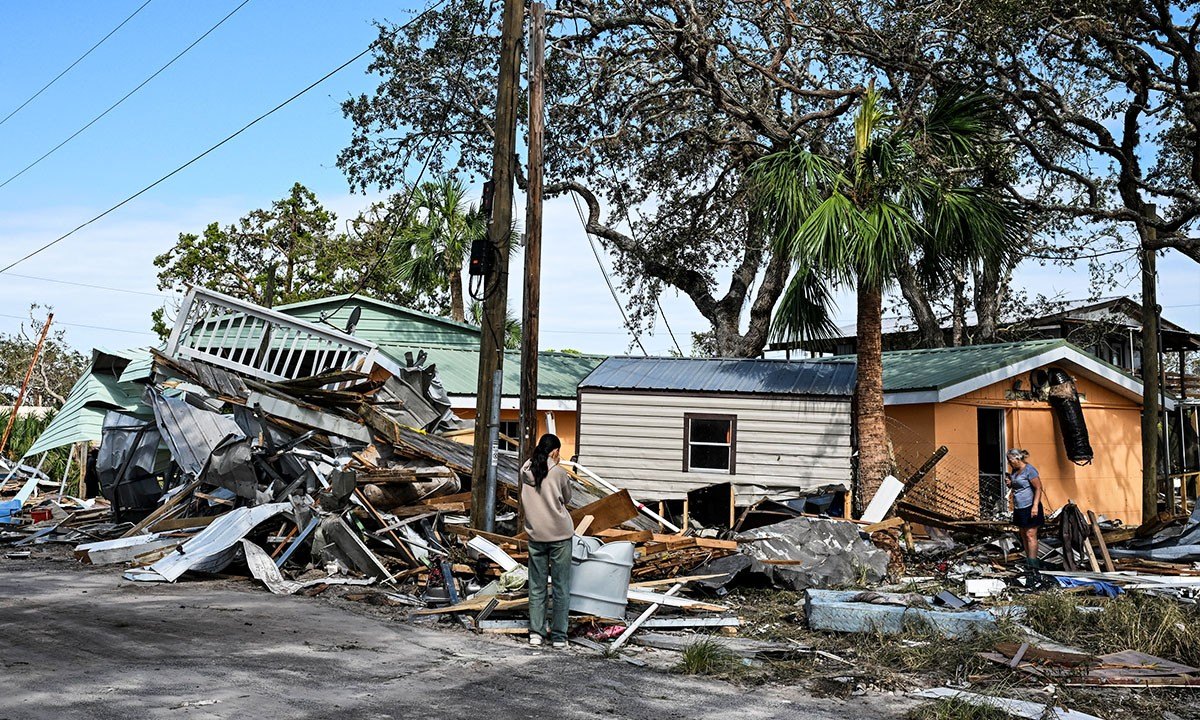See Where Insurance Premiums Are Set To Rise—Including One Coastal City Where They Could Go Up by More Than 300%

CHANDAN KHANNA/AFP via Getty Images
Following an uptick in billion-dollar weather disasters in recent years, home insurance premiums have been rising rapidly.
Unfortunately, the pain for homeowners isn’t over yet, and certain cities in the most disaster-prone locations can expect to see significant additional premium increases over the coming decades, according to a new analysis from climate risk analysis firm First Street.
Between now and 2055, insurance premiums are projected to rise the most in Miami, jumping 322% from current levels, followed by Jacksonville, FL (226%), Tampa, FL (213%), New Orleans (196%), and Sacramento, CA (137%).
Those huge projected increases would be driven in part by rising risks of climate-related disasters—wildfire in the case of Sacramento, and hurricanes in the case of the other four cities.
“Over the next 30 years, we’re likely to see more hurricanes move into the mid-Atlantic and move farther northward, and that’s going to cause additional increases in cost and insurance in that space,” says Jeremy Porter, head of climate implications research for First Street.

(AGUSTIN PAULLIER/AFP via Getty Images)
But Porter notes that even at current risk levels for weather disasters, many home insurance policies are underpriced relative to risk due to state regulations on rate hikes, in a dynamic that has driven steep losses for carriers in recent years.
“So taken together, we have sort of the recipe here, where insurance is increasing,” he says.
Nationally, First Street estimates that free-market, risk-based pricing would drive a 29.4% increase in average home insurance premiums by 2055—a figure that includes an 18.4% correction for current underpricing and an 11% increase from growing climate risks.
Those projections, which are not adjusted for inflation, cover only the rising cost of traditional homeowners insurance for wind, hail, and fire damage, but do not include the rising price of flood insurance.
Flood insurance is typically required only for homes in areas that are at a higher risk of flooding—but for homes in that category, flood insurance premiums could also increase dramatically in the coming years.
Nationally, First Street’s flood model estimates that flood damages will increase by an average of 28% by 2055.

(Joe Raedle/Getty Image)
In some areas, flood damages are expected to surge much higher by then, including 533% in New Orleans, 296% in Atlantic City, NJ, and 122% in Fort Lauderdale, FL.
“We’re getting to the point to where we can start to understand, at least from a climate component, what the additional cost of insurance is going to be,” says Porter.
“There will be other indicators that may also drive up insurance. But if we just isolate the climate component, we’re able to understand how much more important climate is going to be in terms of pricing damages into the future,” he adds.
Why insurance premiums are rising
In recent years, home insurance companies have struggled to keep pace with the mounting losses from major disasters, including hurricanes and wildfires.
In 2024, there were 27 confirmed weather or climate disaster events with losses exceeding $1 billion each, just missing the record high of 28 reached a year earlier, according to the National Oceanic and Atmospheric Administration.
Collectively, home insurers have paid out more in claims and expenses than they received in premiums each year since 2020. The industry’s losses reached 10.5% in 2023, the highest in at least a decade, according to First Street.
In response, many carriers have jacked up their premiums. From 2020 to 2023, those premiums have increased by 33%, rising to $2,530 annually on average, according to a recent NBER study.
And yet, according to First Street, even those higher premiums don’t yet accurately reflect current risk levels, due to various regulations in the insurance industry.
For example, California, recently ravaged by devastating wildfires, requires insurers to obtain approval for rate increases exceeding 7% year over year, while Florida requires approval for annual rate increases over 15%.
In those two states, both at heightened risk for natural disasters, the result is a pricing disconnect that ensures one of two future outcomes: rapid additional premium increases at some point in the future, or an exodus of insurance carriers who refuse to write policies there.
Categories
Recent Posts










GET MORE INFORMATION

